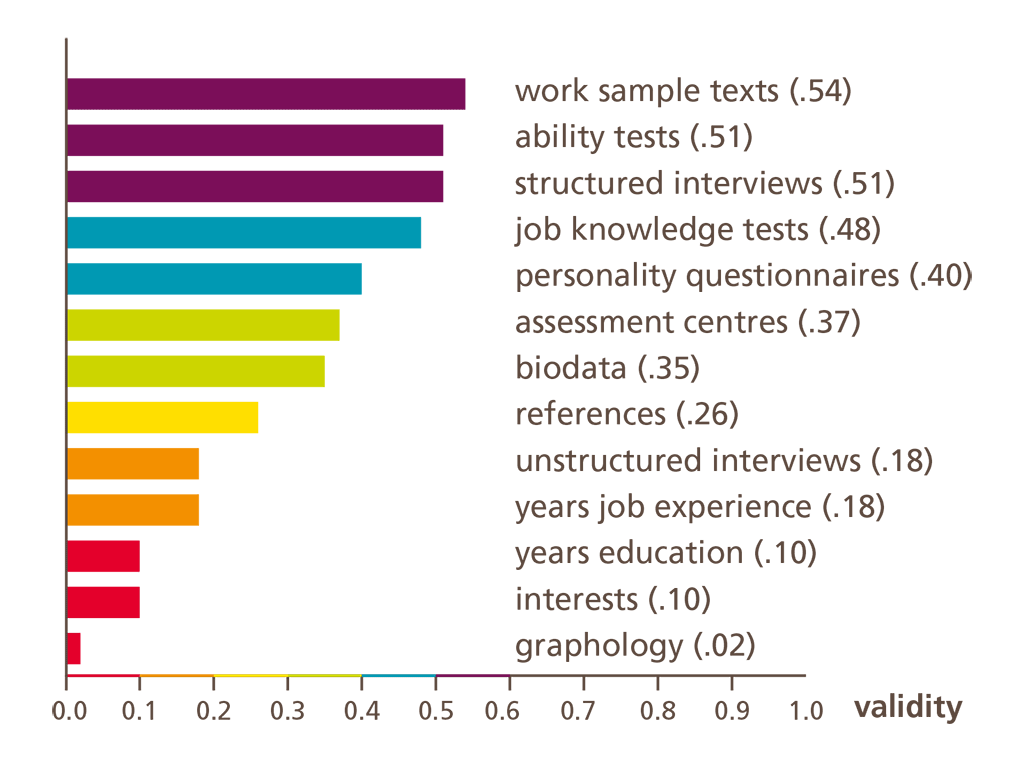"Dance for me, then tell me how many ping-pong balls would fit in this room!" - the Interview Question Hall of Shame
Rob Bailey, Managing Consultant, R&D, OPP

Imagine you’ve turned up for an interview; you’ve prepared carefully, you’ve thought about your strengths, weakness, and examples of your competence in different areas. The interviewer greets you and then says to you:
“Dance for me”
or:
“See the large Telecom Tower, over there - if it fell over, could it hit us?”
or:
“How many ping-pong balls do you think would fit in this room?”
All of these are real-life examples of recruitment interview questions or demands that someone, sometime, thought were a good idea. Example number one comes from a story aired recently on the BBC, the second from personal experience, the third from Google interviews in the past. They’re different, certainly; but are they effective?
In a word... no.
For a recruitment method to be effective, the information you gather needs to differentiate between the people who would be good at the job and those who wouldn’t. Dancing might tell you about dancing skill, extraversion, prenatal testosterone that the individual experienced in the womb, and more. Ping-pong ball estimation might tell you about some aspects of a person’s ability to think critically. At a stretch, some of those might possibly relate to work, but both of these would pick up a lot of confusing information (or noise) that doesn’t relate to the workplace. Neither of them are anywhere near as good as asking something much more effective and much simpler, ie what they’ve done in the past.
There’s a maxim in psychology that anyone from any walk of life would be well advised to heed: “Past behaviour predicts future behaviour.”
Thankfully Google - who, after all, are driven by data - found that hypothetical questions had a poor ability to predict job performance. Their official line has been to drop those questions in favour of the behavioural interview.
At OPP, guided as we are by the standards of Occupational Psychology (the behavioural science of the workplace), we’ve long been aware of the information given in the diagram below, showing which methods are most effective. This is not the first time I’ve included this in a blog of mine, for good reason.

(NOTE: A validity index of 1 would show a perfect fit between the measure and criteria that it is attempting to predict; 0 shows no relationship; 0.4 and above is very respectable.)
The closer the recruitment process sticks to evaluating aptitude for a job (eg through work sample tests) or systematically evaluating past behaviour (a structured interview) or seeking evidence for personality traits suited to a job (eg personality psychometrics) the better the prediction of job performance.
You may protest: “But the quirky interview questions sounded like fun!” They might, but they don’t have a place in a sound recruitment process. If you want to use them, do so elsewhere: Professor Richard Wiseman, in the fascinating book “Quirkology” showed how fun questions worked well when endearing speed-daters to each other. For example, “If you were a pizza, what toppings would you have?” Imagination, charisma and fun are attractive in a setting like this; however, business skills are different.
If you want to be quirky and fun, do it when selecting people for holiday camp entertainers and potential dates; when it comes to business, stick to assessing the skills needed for the job.